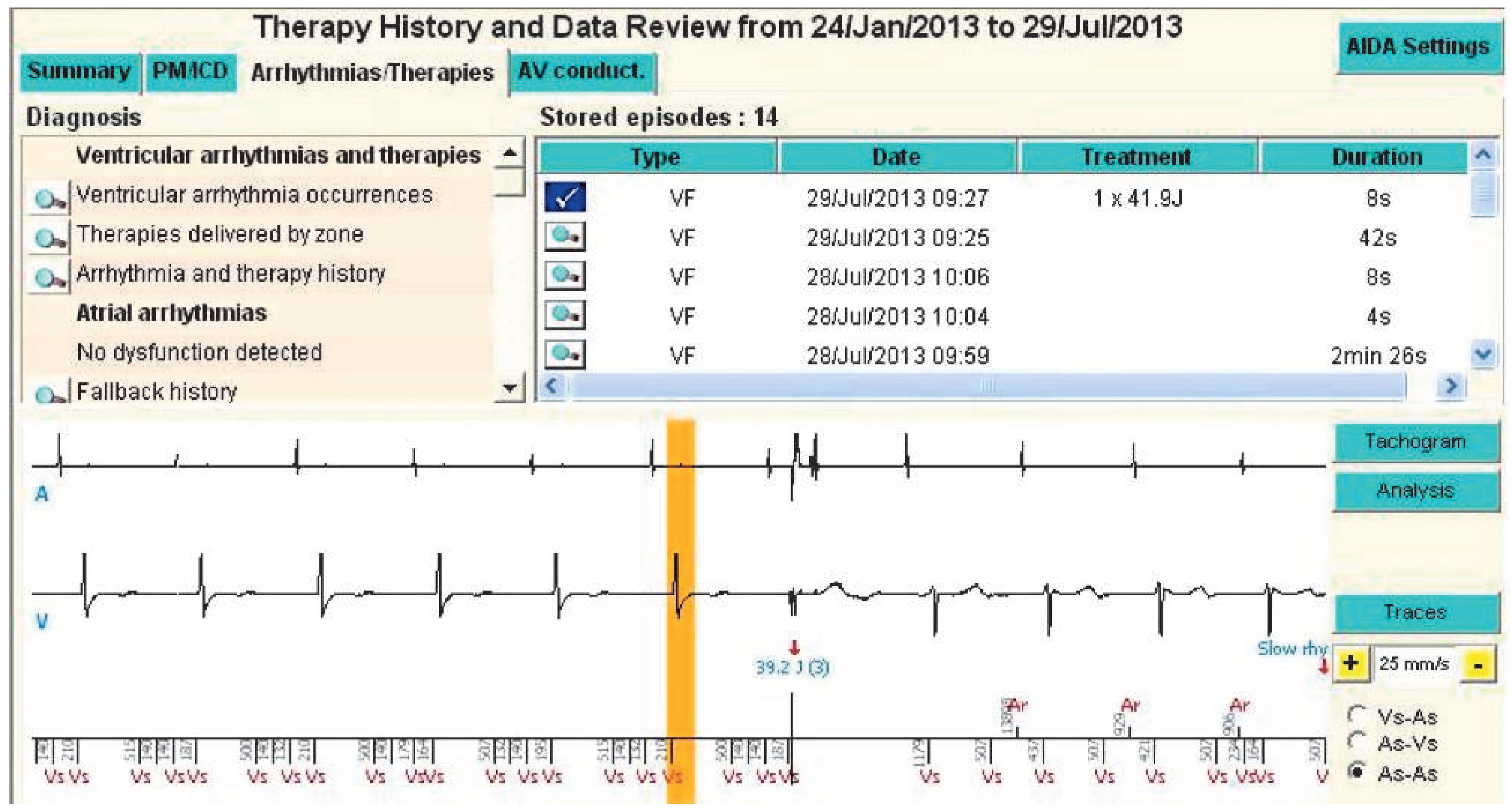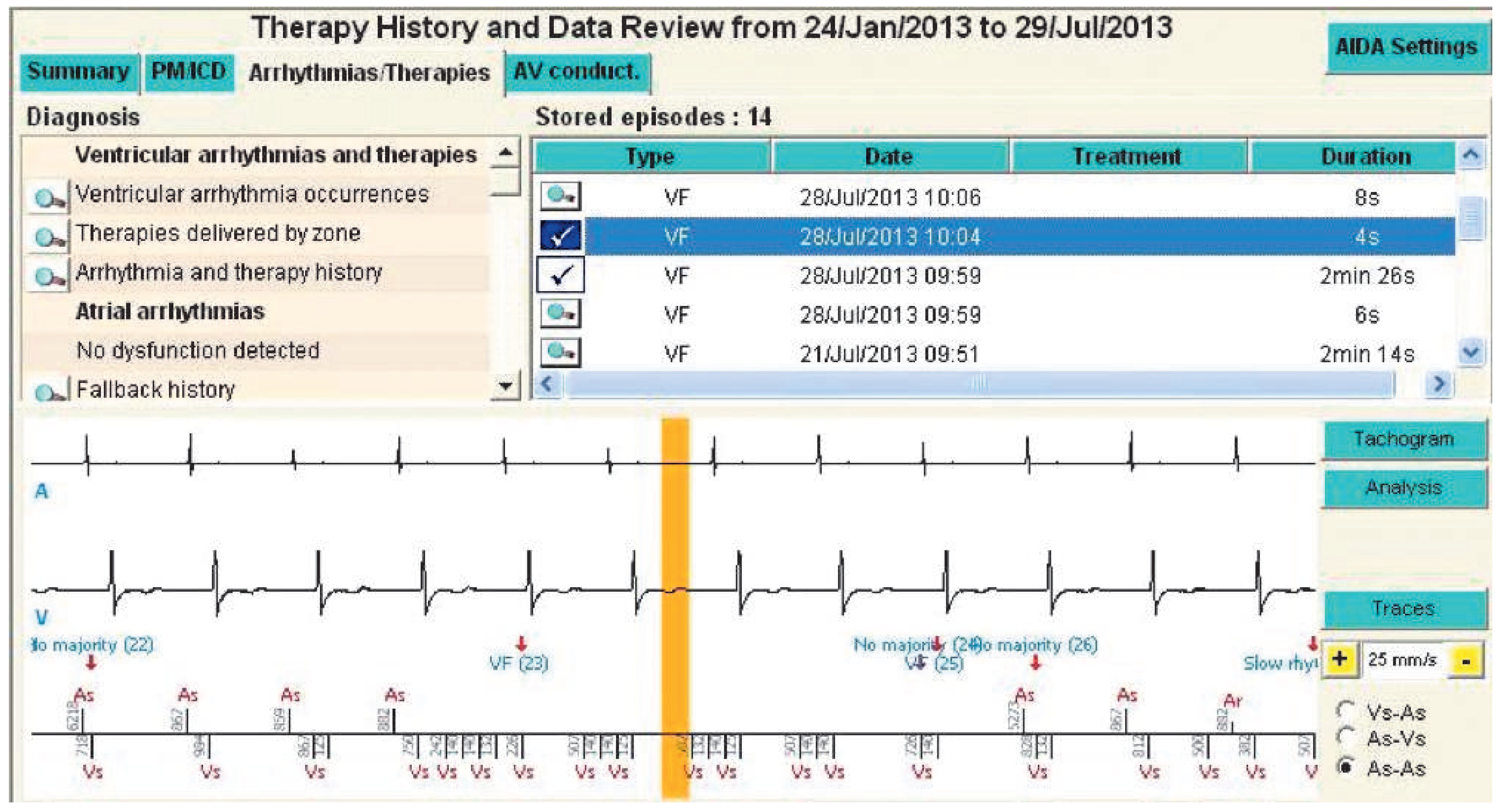Inappropriate ICD Discharge Induced by Electrical Belt Stimulation for Muscle-Building
Abstract
Case history
Funding/potential competing interests
Abbreviations
| Bpm | beats per minute |
| EMI | electromagnetic interference |
| ICD | implantable cardioverter-defibrillator |
| TENS | transcutaneous electrical nerve stimulation |
| VS | ventricular beats |
References
- Wayar, L.; Mont, L.; Silva, R.M.; Alvarenga, N.; Fosch, X.; Castro, J.; Brugada, J. Electrical interference from an abdominal muscle stimulator unit on an implantable cardioverter defibrillator: report of two consecutive cases. Pacing Clin Electrophysiol. 2003, 26, 1292–1293. [Google Scholar] [CrossRef] [PubMed]
- Siu, C.W.; Tse, H.F.; Lau, C.P. Inappropriate implantable cardioverter defibrillator shock from a transcutaneous muscle stimulation device therapy. J Interv Card Electrophysiol. 2005, 13, 73–75. [Google Scholar] [CrossRef] [PubMed]
- Pyatt, J.R.; Trenbath, D.; Chester, M.; Connelly, D.T. The simultaneous use of a biventricular implantable cardioverter defibrillator (ICD) and transcutaneous electrical nerve stimulation (TENS) unit: implications for device interaction. Europace. 2003, 5, 91–93. [Google Scholar] [CrossRef] [PubMed]
- Nagele, H.; Azizi, M. Inappropriate ICD discharge induced by electrical interference from a physio-therapeutic muscle stimulation device. Herzschrittmacherther Elektrophysiol. 2006, 17, 137–139. [Google Scholar] [CrossRef] [PubMed]
- http://www.swissheart.ch/uploads/media/Interferenzenliste_FR.pdf.


© 2014 by the author. Attribution-Non-Commercial-NoDerivatives 4.0.
Share and Cite
Walter, V.; Goy, J.-J.; Villeneuve, H.; Graf, D. Inappropriate ICD Discharge Induced by Electrical Belt Stimulation for Muscle-Building. Cardiovasc. Med. 2014, 17, 186. https://doi.org/10.4414/cvm.2014.00253
Walter V, Goy J-J, Villeneuve H, Graf D. Inappropriate ICD Discharge Induced by Electrical Belt Stimulation for Muscle-Building. Cardiovascular Medicine. 2014; 17(6):186. https://doi.org/10.4414/cvm.2014.00253
Chicago/Turabian StyleWalter, Victorine, Jean-Jacques Goy, Hélène Villeneuve, and Denis Graf. 2014. "Inappropriate ICD Discharge Induced by Electrical Belt Stimulation for Muscle-Building" Cardiovascular Medicine 17, no. 6: 186. https://doi.org/10.4414/cvm.2014.00253
APA StyleWalter, V., Goy, J.-J., Villeneuve, H., & Graf, D. (2014). Inappropriate ICD Discharge Induced by Electrical Belt Stimulation for Muscle-Building. Cardiovascular Medicine, 17(6), 186. https://doi.org/10.4414/cvm.2014.00253



